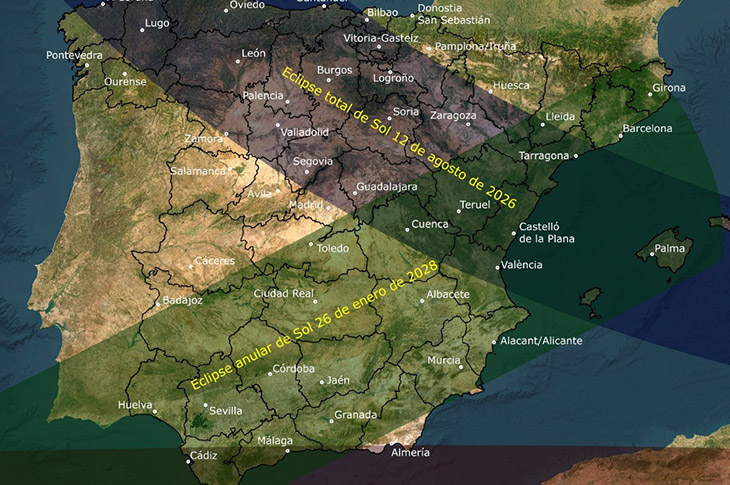The Spanish sky aligns itself with tourism as the Iberian Trio of eclipses arrives
Spain becomes the best place in the world to observe the upcoming eclipses
Spain will soon become the stage for an unprecedented astronomical event, transforming its skies into the focus of international attention: two total solar eclipses and one annular eclipse will mark a milestone on the calendar between 2026 and 2028. Conscious of the magnitude of this phenomenon and its potential to attract tourists, the Spanish National Geographic Institute has launched an official website allowing users to plan their observation of the eclipses in full detail, from any town in the country. This new portal offers an official, free, and accessible guide to observing these three solar eclipses. The tool, developed based on calculations from the Spanish National Astronomical Observatory, offers information on visibility, duration, and observation conditions for more than 8,000 towns, and includes weather forecasts, simulations, and eye-protection recommendations.

It is estimated that the phenomenon, dubbed the Iberian Trio, will attract thousands of national and international tourists. In 2026, Spain will be the only country in the world where the final phase of a total eclipse can be reliably observed. Though the phenomenon will begin over the Bering Sea and reach its peak near Iceland, it will end on the Iberian Peninsula, with its final phase visible at sunset from cities such as León, Zaragoza, Valencia, or Palma de Mallorca. What’s more, the eclipse will coincide with the eve of the Perseids’ peak activity, offering those who stay a little longer at the observation site the chance to enjoy this meteor shower. Spain, a strategic destination to watch the eclipse In 2027, southern Spain will once again take center stage. The total eclipse will reach its maximum duration in Ceuta, with nearly five minutes of complete darkness. The path of totality will also cross Cádiz, Málaga, and Melilla, while the rest of the country will experience a high-magnitude partial eclipse. Finally, in 2028, an annular eclipse will cross Spain diagonally at sunset, with great visibility in Andalusia, the Balearic Islands, the Region of Valencia and Castile-La Mancha. Though it presents a low solar elevation, this detail will allow astrophotographers to capture unique scenes with the sun eclipsed over iconic landscapes. Together, these events position Spain as one of the best places in the world to observe the upcoming eclipses, both due to its geographical location and the tourist infrastructure put in place. This is a phenomenon that promises to mobilize thousands of visitors and establish the role of astrotourism, as it brings together local communities, science, and economic development.

